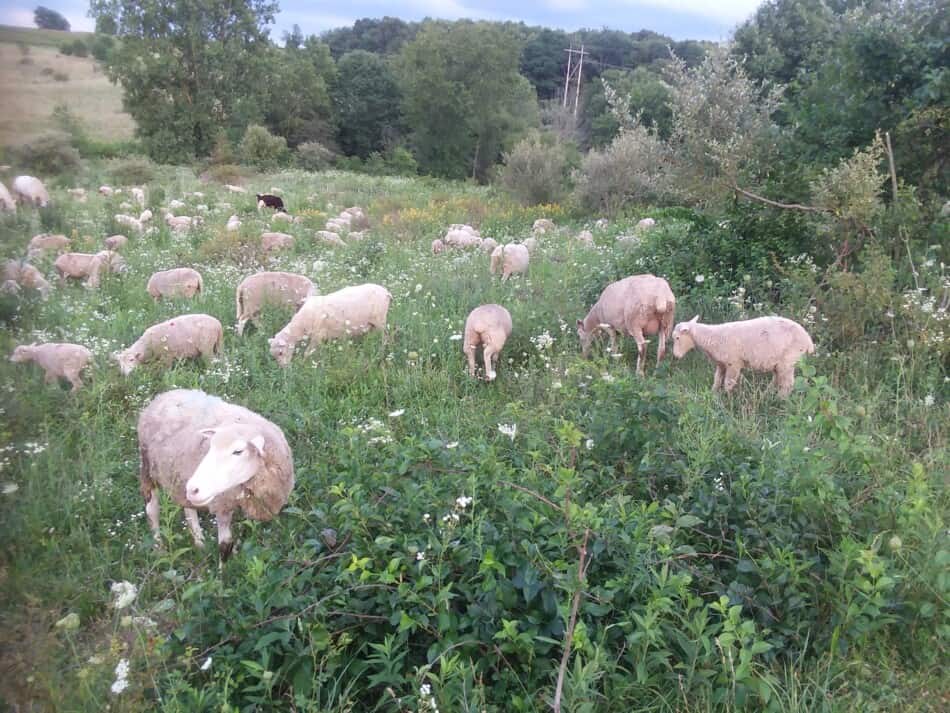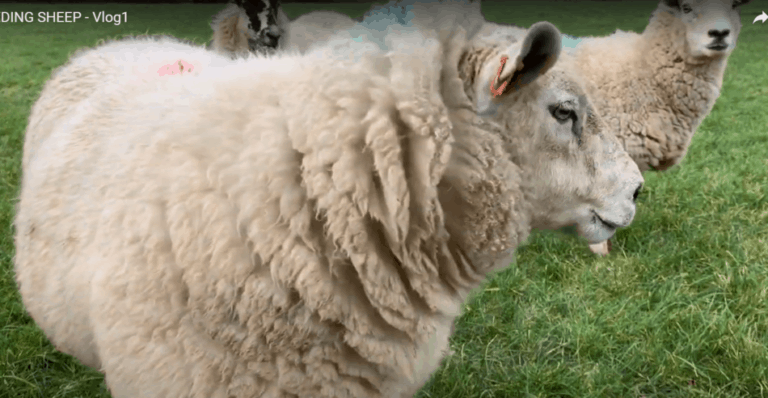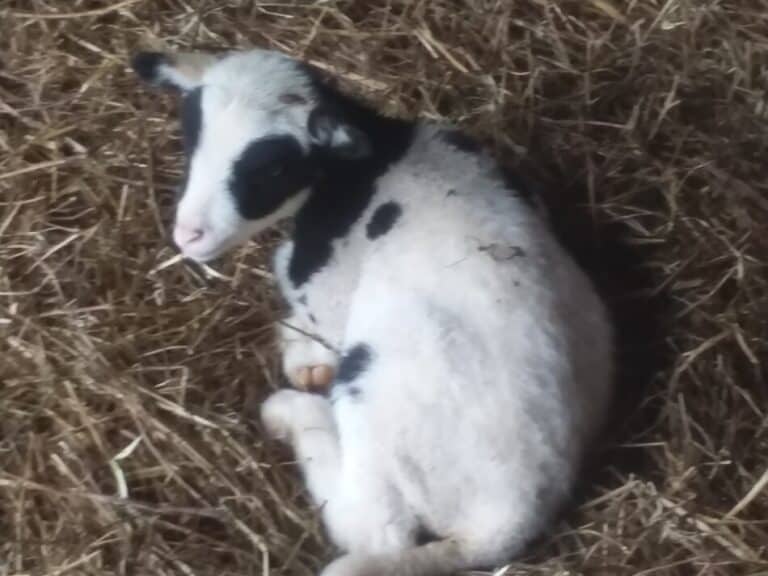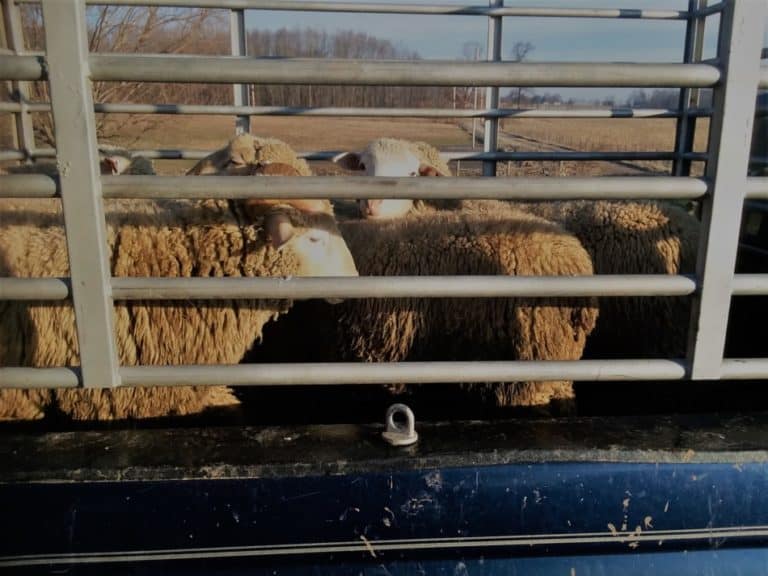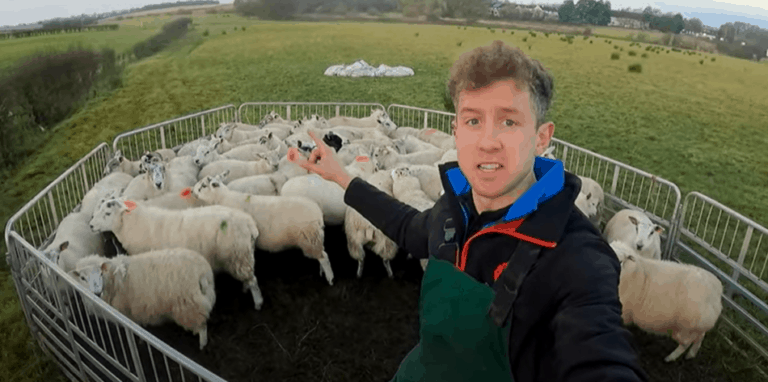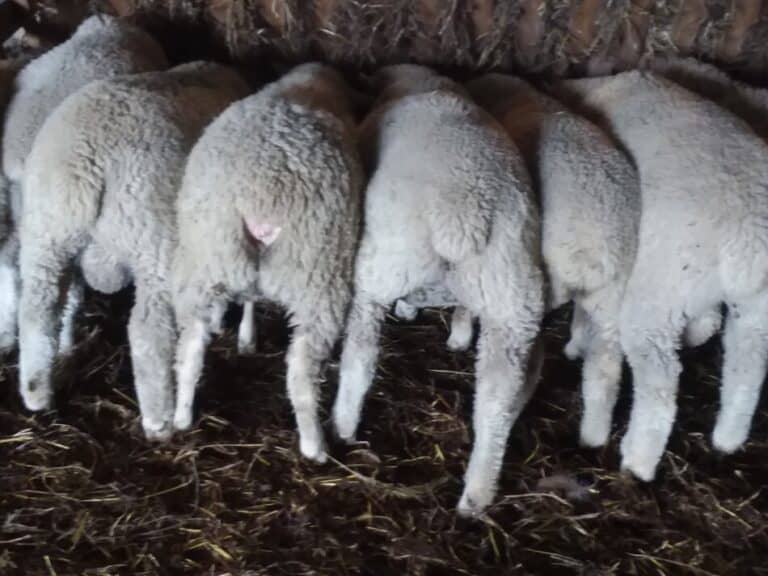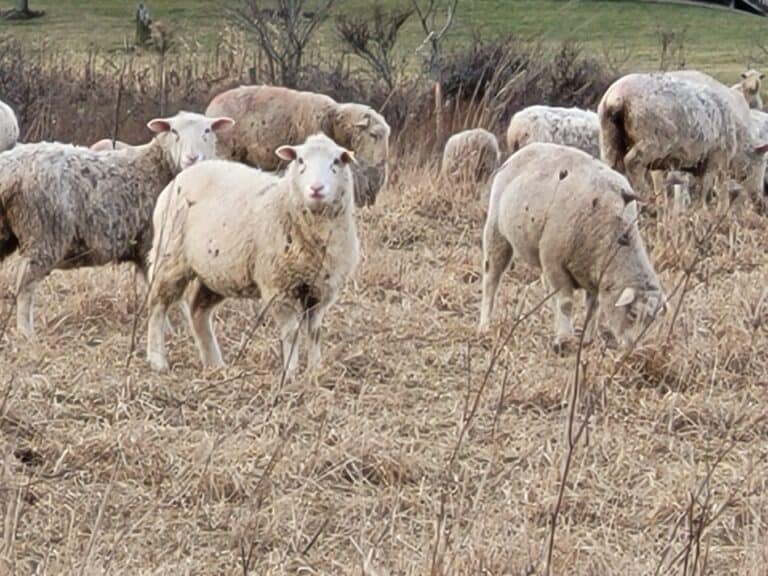What Is The Best Food For Sheep? (With Alternatives)
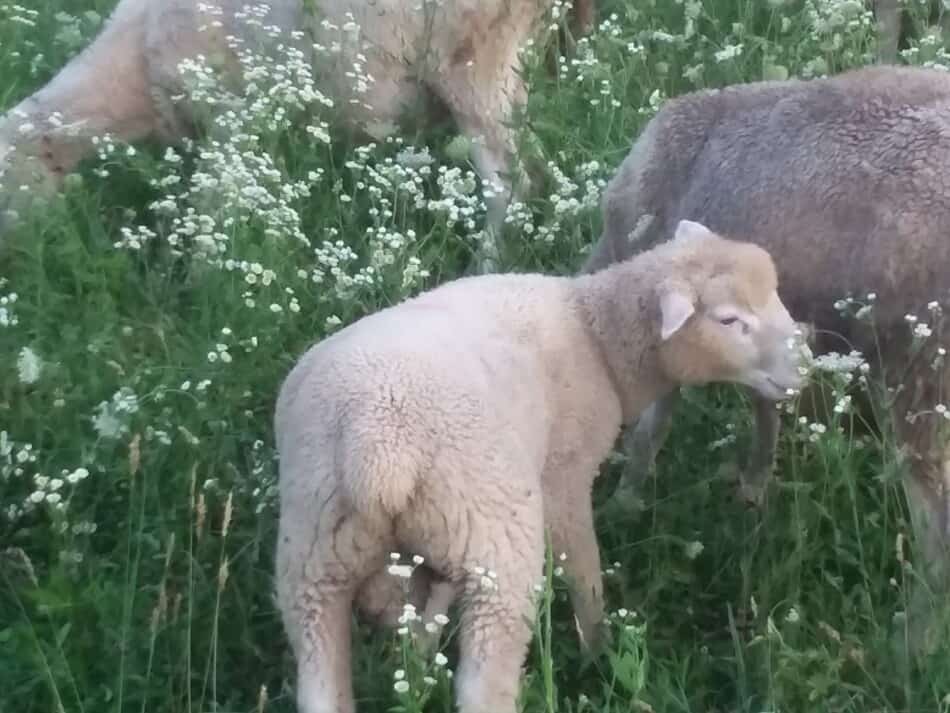
For beginners, it can be confusing to know what your sheep should be eating and what you should not be feeding them. What is the best food for sheep and what do you feed them if you can’t find it?
In general, the best food for sheep is grass. Alternative feeds for sheep, depending upon time of year and farm resources, are hay or hay and a sheep specific pelleted feed.
| Sheep Feed Source | Positive aspects | Negative aspects |
| Grass | great feed for sheep | does not grow year round |
| Hay | available year round | can be hard to find high quality hay |
| Pelleted sheep feed | consistent and easy to feed | more expensive way to feed your flock |
Grass is the best food for sheep
Grass is the best food for your flock of sheep. Sheep are designed to be able to grow and thrive on grass as their only source of food.
Backyard Sheep is an article I wrote that shows you an example of how you can divide up your backyard for your flock.
Since sheep are ruminants, they have the ability to digest fibers in the grass that you and I can not. A sheep has a fleet of bacteria and other microorganisms in her digestive system that use fermentation to get to the food value of forages.
For sheep owners, sheep being natural grass eaters is great news! Sheep can eat your lawn, making less work for you and your family, while gaining weight or raising babies. Nice!
Our sheep eat grass only for 7 months
Our flock is on 100% grass from mid April to mid November (it depends upon the weather and the growing season), and they do great. The flock is ewes with their new lambs and the breeding rams, all together.
As long as we have enough grass growth for the flock to eat the entire time, this is my favorite time of year with sheep. They are so happy to move to a new paddock (small pasture) and get the fresh grass.
We move them to new grass each day, we do not have to buy any of their feed, we just let the grass grow and let them eat it.
An additional thought about having sheep on grass is that it feels good to me. I know that our sheep are happy and able to get all of the vitamins and minerals they need from the sward of pasture plants.
Here’s a short article about sheep grazing the White House lawn in 1919. If sheep can graze the grass at the White House, I’m sure they’ll eat yours, as well!
When you do not have grass, feed your sheep hay
If you do not have enough grass for your sheep, or just run short for the year, feed your sheep hay, instead. Since hay is just dried grass, or other forage plants, it is a great substitute for grass.
How Many Bales Of Hay Do Sheep Need? is an article I wrote that will help you figure up the amount of hay needed for your flock, with multiple examples included.
The reason grass is the first choice of feed for your flock and hay is second is cost. Usually it costs you more to feed your flock for the year 100% hay than it would to feed 100% grass.
If in your area, hay is the cheaper option, then feed the hay. Sheep are adaptable. As long as their energy needs are met, their food for the day being grass or hay really doesn’t matter to them.
I do have to admit, in the early spring and late grazing season, our sheep will try really hard to graze grass down as far as possible before eating only hay. They love the grass but will eat the hay as a second choice.
The reason I bring this up is, if you have grass available and the sheep know it, but you want your sheep in a pen eating hay, they will not be happy. They would prefer the grass.
That doesn’t mean you should let them eat the grass, there are management reasons to keep the flock off of grass at key time of the year, for the sake of the grass and soil health, just know the sheep always prefer grass.
Sheep pasture management can require feeding hay
We keep the main flock in a winter paddock, meaning from December to April they are in one pasture and fed hay each day. The sheep get used to being in, but they would rather be eating the grass on the rest of the farm.
We are saving the grass on the rest of the farm so it has a good growing start the next spring. If we let the sheep eat whatever they want, whenever they want, they’ll nip it all down and the grass will not regrow as well.
For us, the work of keeping the flock in one pasture and feeding hay for the winter gives us a better summer grazing season. For you, all of this will depend upon where you live and what you want to do with your sheep.
Haylage is an option for your sheep
We feed quite a bit of haylage to our sheep. Haylage is fermented hay, kind of like sauerkraut is fermented cabbage. As far as feed goes, haylage is basically wet hay. If the sheep would eat the plant dry or fresh they’ll eat it as haylage.
Our haylage is baled in round bales, which can also be called baleage. All “baleage” means is that it is a bale of haylage. The bales can be rounds or big squares.
The sheep love it and do well on it, so haylage is an option you could consider for your flock, as well. The only downside of haylage is the bale size.
At least in the U.S., the haylage bales are all bigger sized, which would take a long time to feed if you have a small flock. With haylage, you need to be able to feed the entire bale in 3 days or so, especially in warm weather!
In Europe, they make small square bale haylage and feed it to all manner of animals, including horses. Around here, small bale haylage has yet to catch on, which is unfortunate for the small farmer or flock owner.
If you have enough animals that they are eating a round bale of hay a day, consider trying some haylage bales and see how your stock likes it.
Traditionally, haylage is more popular among dairy farmers, so if no one in your area has dairy cattle, haylage will be harder to find.
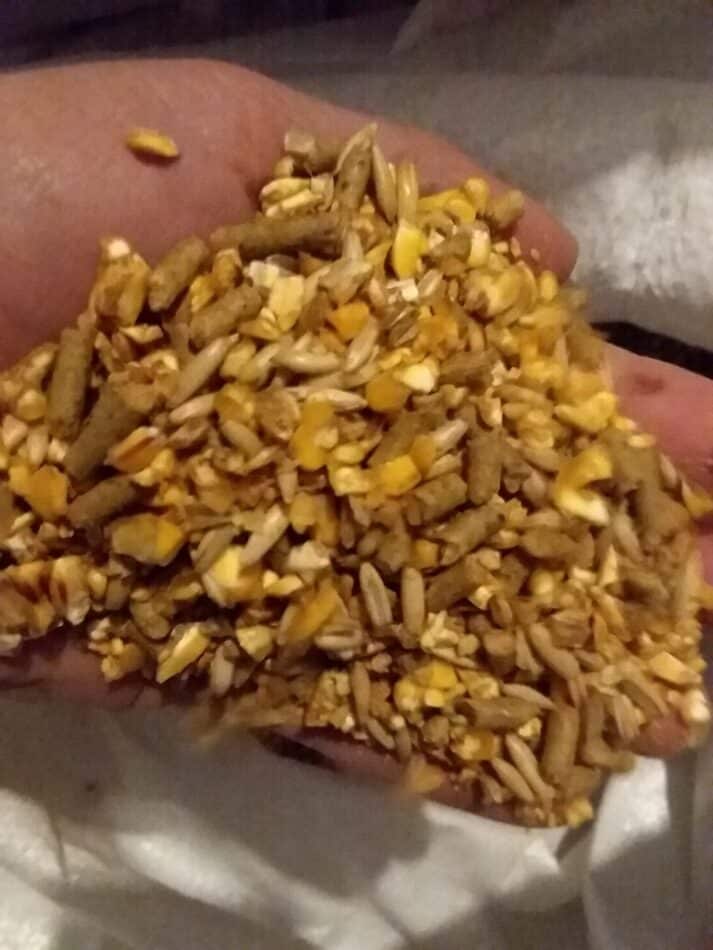
Pelleted feeds are an option for feeding sheep
There are pelleted feeds available for your sheep, if you decide you need to feed something other than grass or hay. Be sure to read the bag carefully, since you’ll still need to be feeding some roughage, like hay or grass, as well.
In the U.K. feeding pelleted feeds to the flock seems to be a normal practice. Especially for shepherds who do not live where they keep the sheep.
The pelleted feeds, I have heard referred to as “nuts” (big pellets that farmers around here call “cubes”) are an easy way to make sure the flock is getting great nutrition at a high nutrition needs time like lactation.
These nuts or cubes are big enough pellets that the shepherd can pour the pellets out on the grass and the ewes can still easily find them.
We do not normally feed pelleted feeds to our sheep, this is simply because of the cost. I love the idea of a pellet, but the cost is too high compared to the benefits for us, since we have a commercial flock.
If these were pet sheep or a hobby flock, pellets would be great, since they are fast, easy and the sheep like them.
We feed a pelleted creep feed to our bottle lambs
The only sheep we have that get a pelleted feed are the bottle lambs that are on a lamb creep feed that has pellets and other whole grains in it with a molasses coating. It looks like a horse sweet feed.
The bottle lambs need the extra nutrition and palatability of the lamb creep feed, since they are without a mom. The creep feed is pricey, but it works well to help wean the bottle babies sooner.
Milk replacer costs more than creep feed and hay!
I do need to mention, if you have a sheep that is feeling “off” try some pelleted feed.
Anytime we have a pet rabbit around, if we have a sheep that is not eating, my husband will give her a small handful of rabbit feed to see if that will perk her up.
Something about a pelleted feed seems to get them to eat a bit, even when the sheep is not eating hay.
If you decide to feed a pelleted feed or any feed to your flock, be sure you are giving them a formulation made for sheep! Do not feed “All Stock” or goat feed, neither will work as a daily feed for your sheep!
